Key takeaways:
- Gamification enhances learning by introducing game elements such as points, badges, and leaderboards, making the experience engaging and rewarding.
- Key principles include immediate rewards, clear goals, and community collaboration, which collectively boost motivation and participation.
- Benefits for learners include increased motivation, simplified complex topics, and enhanced social interactions leading to deeper understanding.
- Effective gamification strategies involve progress visualization, simulations for real-world relevance, and engaging quests that promote teamwork and excitement.
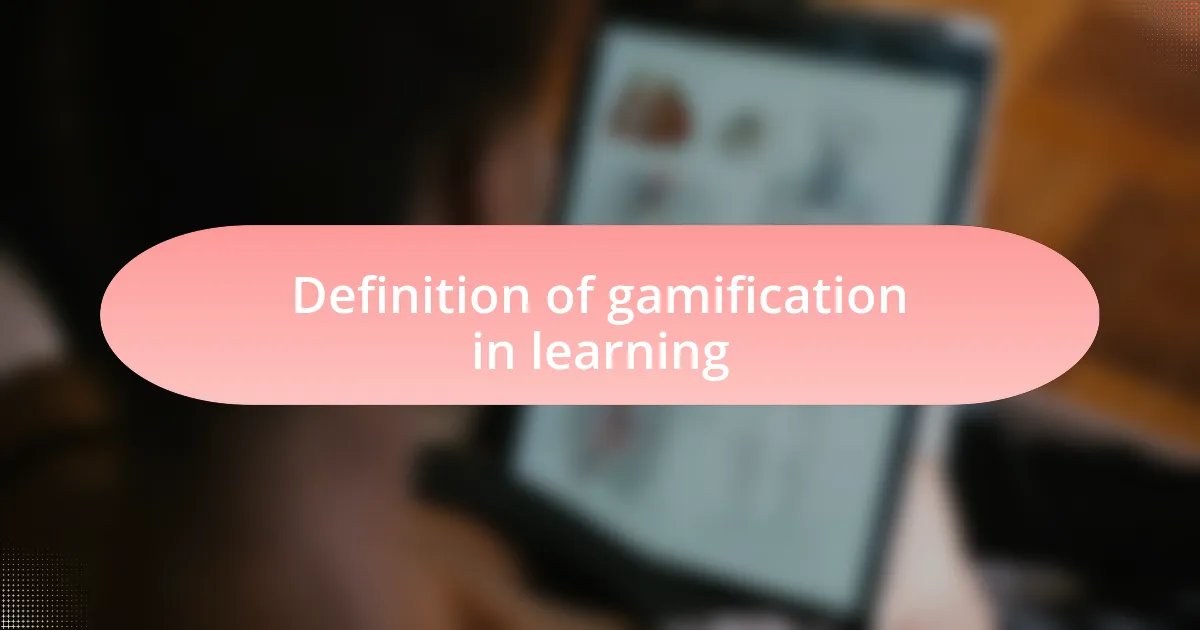
Definition of gamification in learning
Gamification in learning refers to the incorporation of game-like elements into educational environments to enhance engagement and motivation. By using points, badges, and leaderboards, organizations can transform mundane training into exciting challenges that foster competition and achievement. Have you ever felt that rush when you reach a new level in a game? That’s the essence of gamification—it’s about making learning feel rewarding and stimulating.
When I implemented gamification in a corporate training program, I noticed a notable shift in employee participation. Participants weren’t just going through the motions; they actively engaged with the content because they wanted to earn those badges and showcase their skills. Isn’t it fascinating how a simple game element can turn a routine task into a captivating experience?
In essence, gamification is not merely about entertainment; it’s a strategic tool for enhancing the learning process. How often have you struggled to keep your team engaged during a workshop? With gamification, it offers a refreshing solution that taps into our innate desire for growth and recognition, making learning not just necessary but also enjoyable.
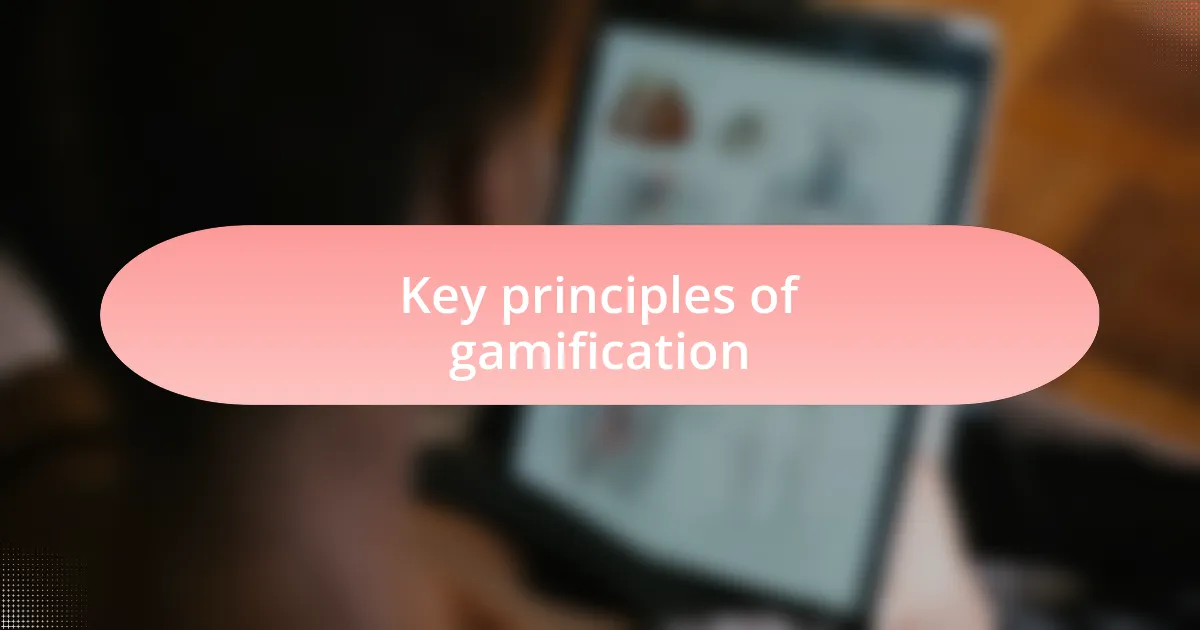
Key principles of gamification
The key principles of gamification center around motivation, engagement, and feedback. One essential aspect is the concept of immediate rewards—think of how a quick pop-up that announces new points or rewards can energize participants. This instant gratification resonates with learners, reinforcing their efforts and encouraging them to continue striving for progress. In my experience, when I introduced real-time feedback loops in a project, it fostered a sense of accomplishment that kept everyone pushing forward.
Another foundational principle is the importance of clear goals. Clear objectives give learners a sense of direction, guiding them in their journey. Often, I’ve seen that if participants know what they need to achieve and the steps to get there, their engagement increases dramatically. Reflecting on a scenario where participants completed a challenging module with set milestones, I could almost feel the collective sense of victory as they reached those goals together.
Lastly, community and collaboration play a vital role in effective gamification. Gamified environments that encourage teamwork not only foster camaraderie but also enhance the learning experience. I remember a training session where participants were grouped into teams to tackle challenges together; their interactions sparked discussions that deepened understanding and made the content much more relatable. Isn’t it intriguing how a supportive group dynamic can amplify individual learning?
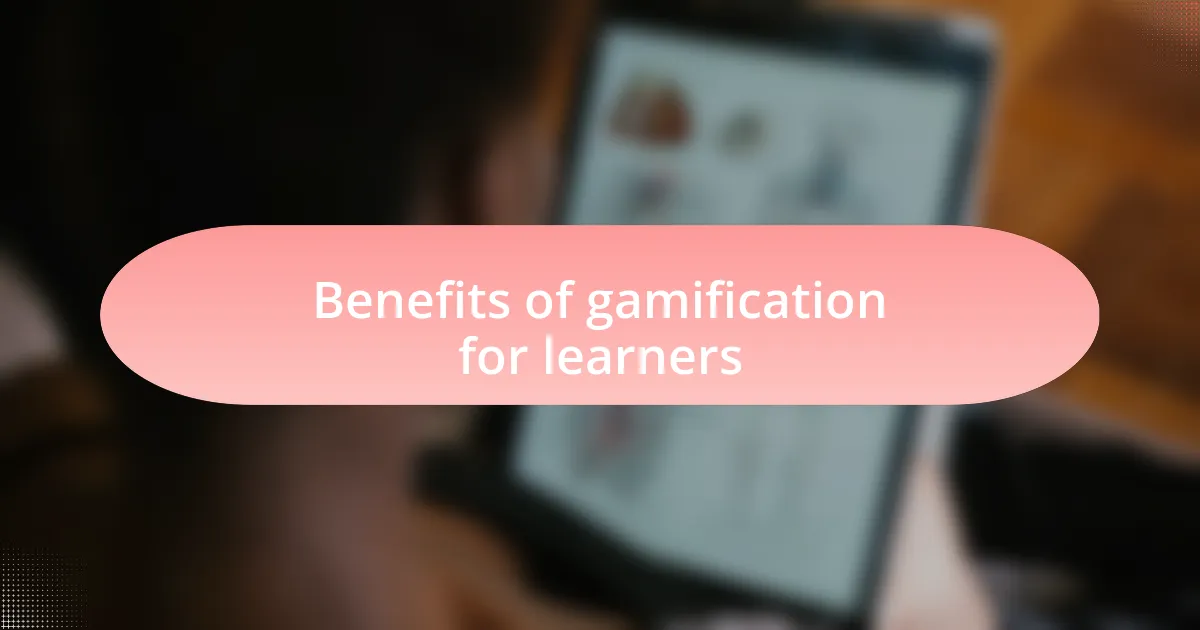
Benefits of gamification for learners
When it comes to learners, gamification provides a powerful boost in motivation. I recall a time when I designed a training module that included a leaderboard. Suddenly, participants who might have typically been passive took center stage, eagerly tracking their progress and competing for top spots. Watching their competitive spirit ignite was contagious; it transformed the learning process into an exciting challenge rather than a mundane task.
One significant benefit of gamification is the ability to make complex topics more approachable. I remember when I integrated game-like scenarios into a technical training session. Instead of feeling overwhelmed by the subject matter, learners engaged with the material in a playful context. It was fascinating to see how a light-hearted atmosphere empowered participants to explore difficult concepts with curiosity rather than fear. Have you noticed how a little fun can turn anxiety into enthusiasm?
Lastly, the social interactions fostered by gamification can lead to deeper learning experiences. In my observations, when learners collaborated in teams to solve problems, the discussions often revealed insights that one might miss when working alone. One day, during a collaborative exercise, a group pieced together various ideas that not only furthered their project but also strengthened their understanding of the subject. Isn’t it remarkable how learning together can lead to unexpected revelations?
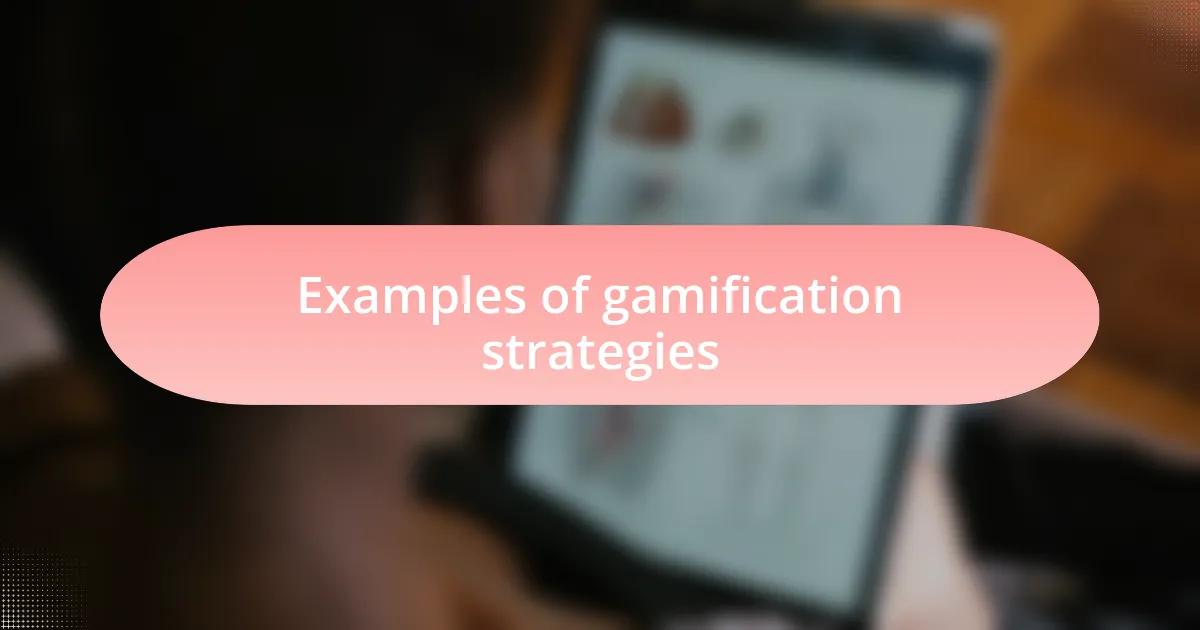
Examples of gamification strategies
One effective gamification strategy involves adopting progress bars and achievement badges to visually reward learners. I introduced a badge system in a leadership training program, where participants could earn digital trophies for completing modules or participating in discussions. The sense of accomplishment attached to those badges motivated individuals to not only finish their tasks but also strive for mastery in the subject. Have you ever found yourself working harder just to earn that recognition?
Another strategy worth considering is using simulations or role-playing scenarios. In my experience, when I created a simulation that mirrored real workplace challenges, the learners didn’t just absorb information; they became actively involved in problem-solving. One participant told me that the experience felt like a safe space to experiment and refine their skills without the pressure of real consequences. Can a simulated risk lead to better decision-making in real life?
Quests or missions can also be highly engaging. I remember launching a scavenger hunt during a sales training session, where teams raced to gather information and solve clues about product offerings. The excitement and collaboration resulted in not only enhanced knowledge but also strong bonds among team members. It’s fascinating how a playful competition can drive camaraderie and create a supportive learning environment. What if every training session could feel like an adventure rather than a chore?
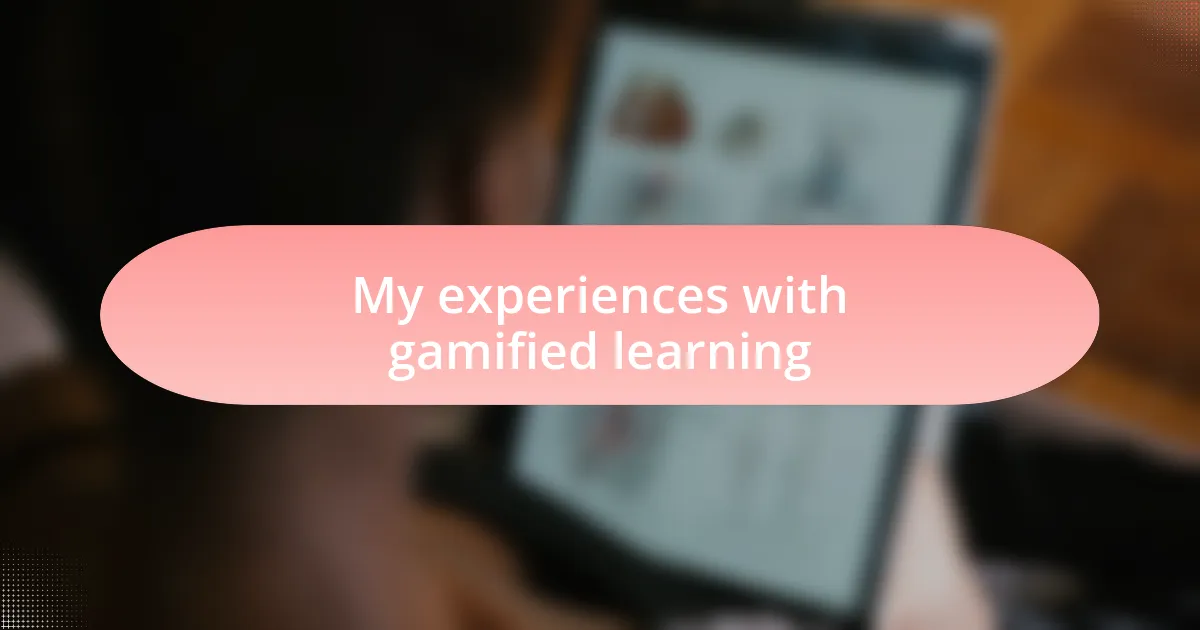
My experiences with gamified learning
In my journey through gamified learning, one standout experience was during a product launch training. Instead of the typical slide-filled presentation, we turned it into a game where participants could earn points by answering trivia and completing challenges related to the product. Watching their competitive spirits ignite was a revelation; I realized that learning could be not only informative but also exhilarating. Did you ever think that a simple game could change the dynamic of a corporate training session?
Another memorable instance occurred during an organizational development workshop where we implemented a leaderboard system. At first, I was skeptical about how it would be received, but it transformed the atmosphere. Individuals who had previously been hesitant began to engage more actively, spurred by the friendly competition. It felt incredible witnessing colleagues support one another to climb the rankings. Isn’t it fascinating how a little competition can foster collaboration?
Finally, I experimented with storytelling as a gamification tool in a compliance training session. I created a scenario where participants had to navigate various dilemmas, making choices that influenced the outcome. I was amazed by how invested everyone became in their characters; the stakes didn’t just feel high—they were. The lines between learning and play blurred, making the content far more memorable. How often do we get to feel such a personal connection to our training?